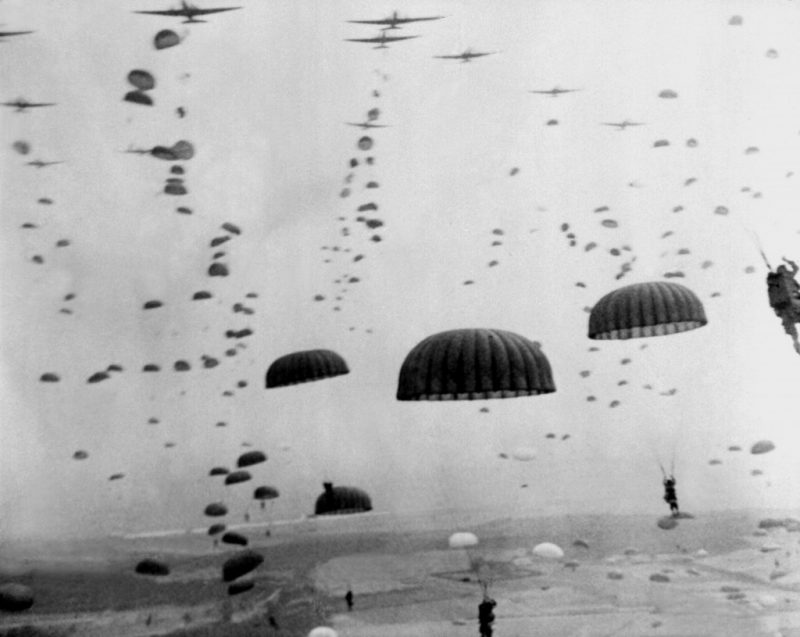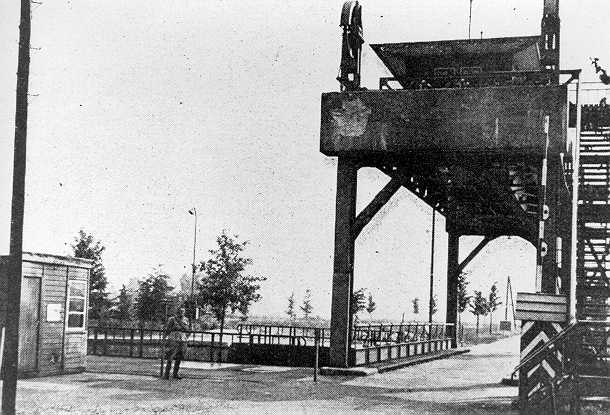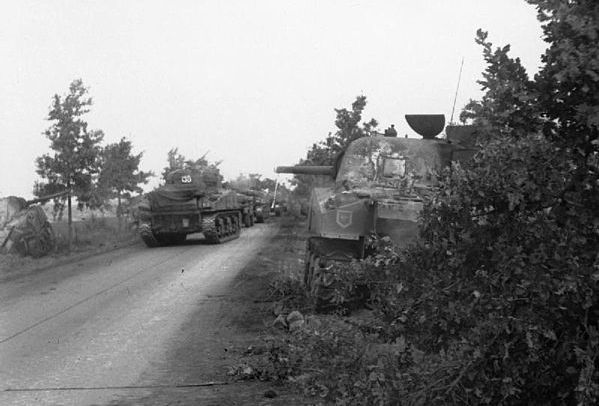A day-to-day account of Operation Market Garden, as it happened from September 17th – September 25th 1944.
Eindhoven / Hells Highway
At Veghel the 501st Parachute Infantry Regiment (PIR) was dropped on two drop zones to enable an attack on the bridges over the AA and the Zuid Willemsvaart from both banks. Unfortunately the 1st battalion which was to land on the north bank on drop zone A1 had a misdrop and landed around Heeswijk Castle (5km west of Veghel) they quickly marched to Veghel but by then the bridges there were already secured by the rest of the 501st which landed on drop zone A between Eerde and Veghel.
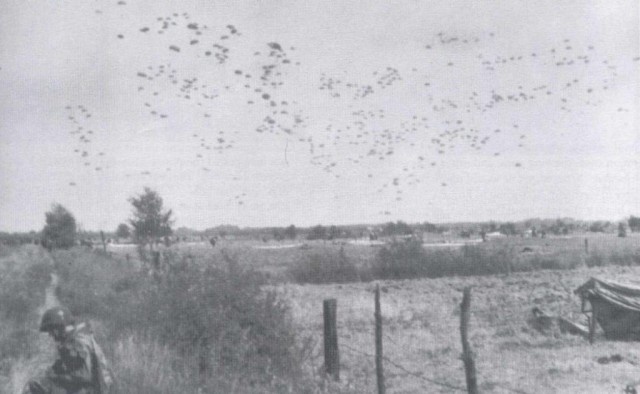
At Son the 506th PIR was less fortunate, after landing on drop zone C they attacked the bridge over the Wilhelmina canal but it was blown in their face when they reached it. The engineers of the 101st started building an improvised footbridge across allowing the 506th to start their attack on Eindhoven but they were not reach it that day. Sniping Germans kept delaying the advance until they eventually halted for the night.
The 1/502nd PIR captured the bridges over the Dommel at St Oedenrode. At Best H Coy 2/502nd PIR tried to take the bridge at over the Wilhelmina canal which suddenly became a prime objective for the 101st having lost the bridge at Son. Unexpected heavy German resistance made the capture of the bridge that day impossible. One platoon was cut off near the bridge and would remain isolated for 2 more days.
Nijmegen
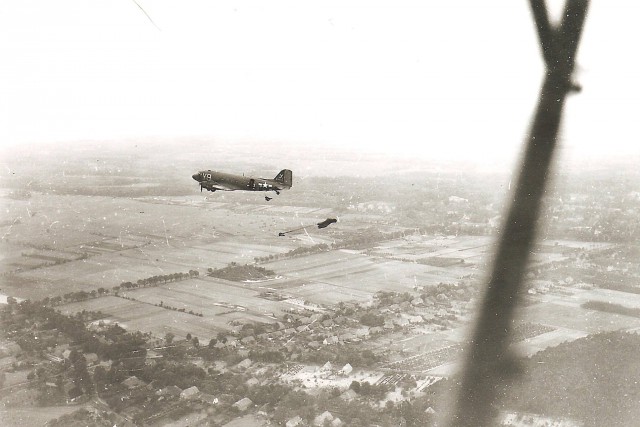
The 82nd fared a better; E Coy 2/504th PIR attacked the massive bridge over the Maas at Grave with a Coup de Main, landing on the south bank next to the bridge. The rest of the 2nd battalion landed on nearby drop zone O and attacked the north side of the bridge. This enabled a swift capture of this vital bridge across the Waal River.
B Coy 1/504th, in conjunction with 2/505th took the lock bridge (bridge 7) over the Maas-Waal canal near Heumen. C Coy 1/504th attacked towards the road and rail bridges (bridge 10) at Neerbosch while en-route trying to take two more bridges (bridge 8 and 9) over the canal, both of which were blown by the Germans. They did not reach the Neerbosch Bridge until the early morning of September 18th. 3/504th was tasked to take the main Grave to Nijmegen road which they did with little difficulty.
The 505th PIR landed at the south end of the Groesbeek Heights at drop zone N which they had to secure, 2/505th had to land on an alternate drop zone near drop zone T because two streams of C-47′s converged above drop zone N and threatened to drop the sticks on top of each other. 1/505th tried to take the rail bridge at Mook (bridge 6) but this too was blown by the Germans, the rest of the battalion secured the south end of the Groesbeek Heigths, with Mook and Riethorst as their most important targets.
After landing 1/508th had the task to take the Nijmegen road and rail bridge but due to communications errors and ambiguous orders they did not start their assault on the Nijmegen road bridge until after 20:00hrs. They were halted by just arriving SS troops only a few 100 meters from the bridge. 2/508th attacked towards the bridges across the Maas Waal canal (bridges 9 and 10) and 3/508th dug in in the hills overlooking Berg en Dal.
Arnhem
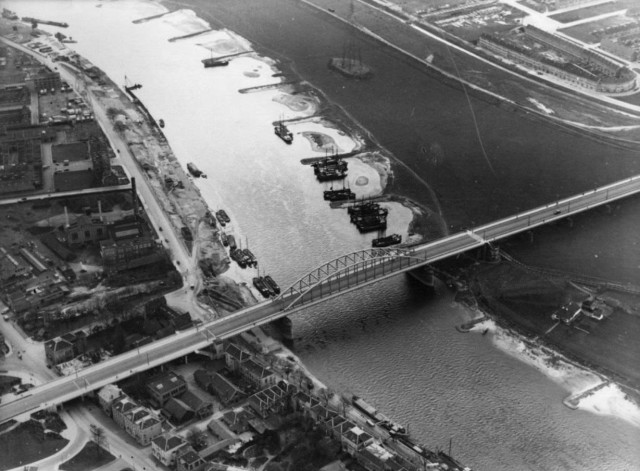
The 1st Airborne at Arnhem did well, Lieutenant Colonel John Frost and his 2nd battalion, 1 Parachute Regiment taking the “lion” route managed to seize the northern end of the road bridge with his force of around 600 man. They also tried to take the railway bridge at Oosterbeek but this was blown when they were practically on top of it.
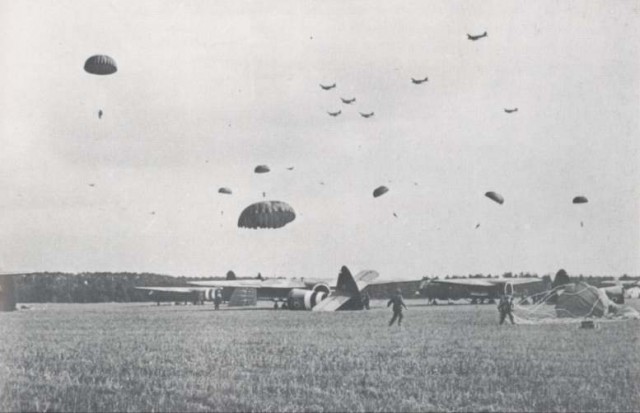
The 1st battalion, taking the Tiger route, advanced into Oosterbeek but then stopped for night, getting to Oosterbeek had not been easy because they ran into Sepp Krafts SS training battalions blocking line. The 3rd Battalion ran into the same blocking line not far from the drop zone and was held up for the rest of the day. The rest of the division had the task of securing the drop and landings zones for subsequent lifts.
Belgian / Dutch border
At exactly 14:00 hrs the ground offensive started. The assault started with a massive creeping barrage which should have destroyed the German defensive line. Unfortunately the Germans had pulled back a bit right before the barrage started so most shells landed among empty foxholes and slit trenches. Then the Irish guards tanks which headed the advance started moving. In the beginning the advance seemed to go very smoothly but then the Germans sprung their trap and 9 Shermans and one armoured car were hit almost simultaneously.
This blocked the road for the first time and the burning Shermans had to be pushed off by tank dozers. The troops used Purple smoke to signal the air force, which was waiting overhead, to attack the new German positions. This combined with infantry assaults enabled the advance to continue and break through the German line of resistance. The woods to the left and the right of the road were cleared by the 1 and 2 Dorset supported by tanks from the 2 HCR. Despite all this the Germans kept attacking the advancing tanks with Panzerfaust rockets thus managing to delay the advance.
At the end of the day they were no further then Valkenswaard (15km from the starting line) before they stopped for the night.
By Joris Nieuwint
